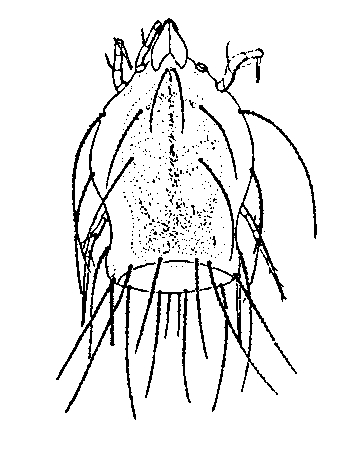House mite
(Glycyphagus domesticus)

Biology:
House mites are very small creatures, usually less than 0.5 mm long, which have 6 legs as larvae and 8 as adults. They are part of the arachnid class. They have long, feathered bristles on their bodies.
House mites usually start as eggs, then go on to become larvae before going through various nymph stages and then finally becoming adults. Often, special survival forms can also develop, which can withstand unfavourable conditions for a very long time. If the living conditions are ideal, this usually leads to mass reproduction.
Damage:
House mites can be found predominantly in rooms with a high level of humidity. They feed on all organic substances, particularly if these have become moist and mouldy, with their preferred foods being flour, cheese and ham.
In very damp dwellings, they live in beds, carpets and upholstered furniture, where mass reproduction can occur. When the mites come into contact with people, they can cause itching, rashes and asthma.
